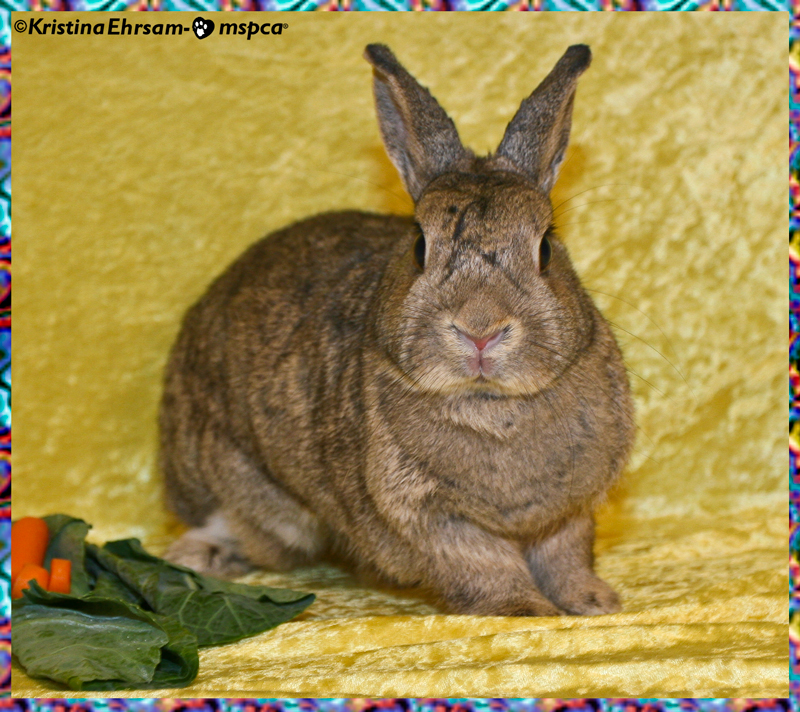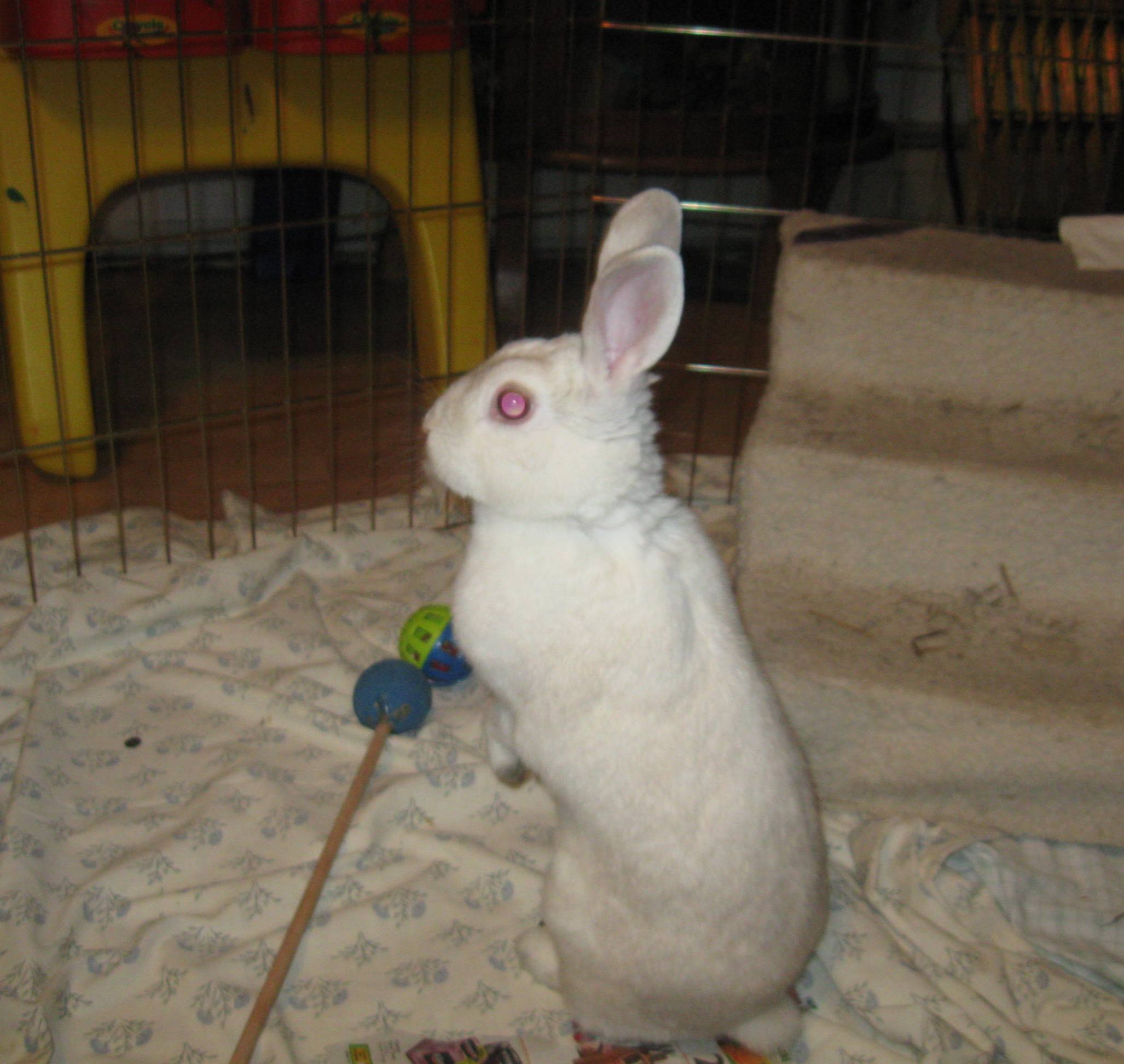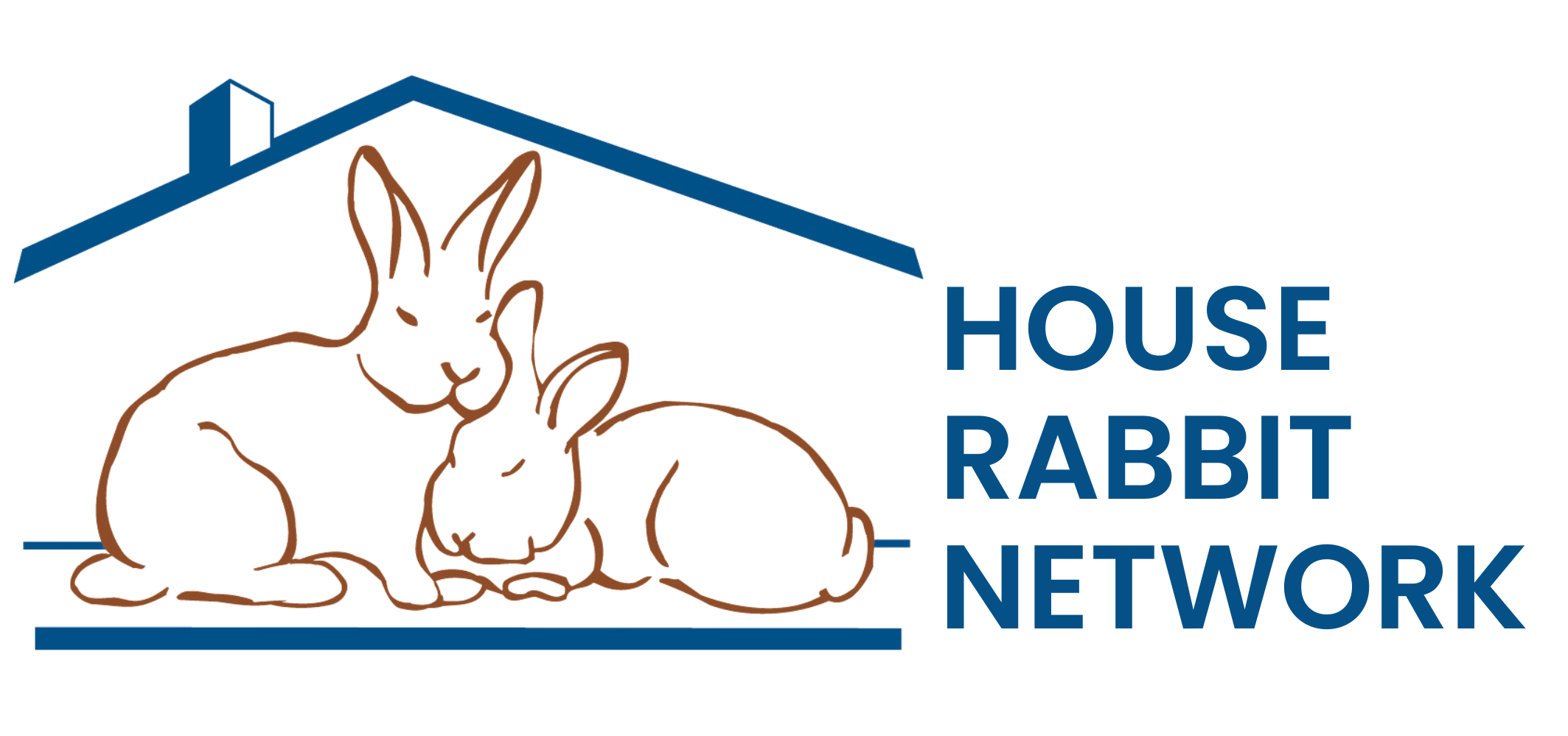Helping Grumpy Rabbits
I’ve been working with aggressive or “grumpy” rabbits for about two years. I’ve found that I enjoy helping these rabbits overcome their “issues” and ultimately become an active member of an adoptive family. These are not “bad” bunnies, but victims of their personal histories. I volunteer at a local shelter and have been drawn to these cantankerous, curious and commendable creatures.
My first experience with grumpy rabbits began when I was about 12 years old. I had two very nice and laid-back albino rabbits, and my brother had a gray and white Dutch named Moondust. Moondust’s “normal” behavior was to chase you around the yard, trying to either nip your ankles or mount your leg. Moondust was a very intelligent rabbit, illustrated by the fact that he would hop back into his cage when he was done exercising. As a child, I just accepted his “odd behavior” as part of his personality. He was not neutered, which most likely accounts for his territorialism.
When I was younger, my love for animals was indulged with hamsters, guinea pigs, dogs and rabbits as companions. When I got older, married and became the mother of three children, life became hectic and I didn’t have any of my bunny playmates for decades. Once I began working for a shelter, my fascination with rabbits was quickly rekindled.
At the shelter, I was soon introduced to rabbits who would make the “killer rabbit” from Monty Python look shy. I became curious as to why some rabbits came into the shelter very socialized and friendly while others were cage-aggressive, exhibiting this behavior by charging, biting, boxing and kicking with their rear legs. There were also the ones who hid in the corner and would attack if approached. After careful observation, it’s my opinion that there are many reasons why rabbits can be grumpy: being unneutered; a history of abuse, neglect, or lack of attention; little or no socialization or human contact; and boredom.
My first experience fostering a grumpy rabbit was Beatrix. She was a spayed two-year-old female. Spaying or neutering is an excellent place to start when dealing with a grumpy rabbit. These surgeries not only cut down on an animal’s territorial behavior, but they’re also good for the future health of the rabbit and preventing unwanted pregnancies. When I began fostering Beatrix, she would run around and around the cage so that you couldn’t touch her. She feared human contact to the point that she would attack me if I tried to touch her. It was as if she believed that a human touch would cause her to shrivel up and die on the spot. Luckily, at the same time Beatrix came to live with me I was taking a course in Tellington TTouch and my instructor Edie Jane took an interest in Beatrix’s behavior. Edie started to get her used to touch by using a feather on a long stick. Once Beatrix was allowing this without protest, Edie began to slide her hands up on the stick, closer to Beatrix, to the point where she could pat Beatrix with her hands. Gradually, over weeks, she started to get used to being patted, picked up and held. I would try some of the TTouch techniques on her with positive results – she especially loved the ear slides.


Cute little Beatrix and Delilah
I also started clicker-training her to come to the front of the cage so that I didn’t have to go into the cage after her. She turned out to be a very intelligent rabbit and quickly learned commands such as “come”, “up” and “spin.” She began to enjoy one-on-one time with me, sitting in my lap and being patted. It appears that many of these so called grumpy rabbits are intelligent and bored, and quickly respond to clicker training as an outlet for their unspent energy. I’ve begun to investigate agility training for rabbits as a way to engage their brains.
I’ve known Reiki Healing Energy for years and I decided to try to adapt it for rabbits. Beatrix was my first rabbit Reiki patient. She responded well, which was evidenced by her coming to me for cuddling and allowing me to touch her gently while I was sending good energy to her. It took Beatrix about six months to learn to trust people and become a sweet rabbit. She was eventually transferred to HRN and was adopted by wonderful people for her forever home.
Following my positive experience with Beatrix, I took on the rather daunting task of fostering two more rabbits at the same time from the shelter, Rosie and Delilah. Each had different problems but both had issues with cage aggression. Rosie was a beautiful black Lionhead and California mix who weighed about 10 lbs. She looked more like a Scottie dog than a rabbit. Her behavior issues diminished in foster care and she responded quickly to attention, Tellington TTouch and clicker training. About three weeks into having Rosie as a foster, she surprised me by kindling three bunnies. The fact that she was pregnant while at the shelter probably explains much of her cage aggression. She was so trusting by the time she had the babies that she would even let me pick them up without any resistance on her part. After six more weeks, I am happy to report that she and the three bunnies found wonderful homes. In fact, Rosie was adopted out before two of her babies.
I worked with Delilah for a few weeks before Rosie’s babies were born. Delilah was terrified of human touch and became wild-eyed whenever she was approached. She was not as actively aggressive as Rosie, but she also didn’t seem to enjoy being touched by human hands. When I went to take her out of her cage, she would back up into a corner trembling and strike out at me with teeth and feet. I opted to get a top-opening cage for her until I gained her trust. Delilah had also developed a habit of chewing anything and everything. On her intake report at the shelter, the people who surrendered her said that she chewed wires and furniture. She also loved digging. Although at first I thought Rosie would be my tougher challenge, I soon realized it would be Delilah. I was given the choice by the shelter to continue fostering her or transfer her to HRN. I gladly accepted the transfer for her sake.
A few months ago, I asked Suzanne if I could continue to foster Delilah through HRN – I felt like I owed her some more time and attention. I gave her phone books and towels to dig. She loves to chew, so I gave her plenty of apple branch sticks and cardboard. She responded well to clicker training for treats. I was able to clicker-train her to come to the door of a side-opening cage. This relieved much of her anxiety about hands going into the cage. I do some Tellington TTouch on her every day and she has grown to enjoy these sessions. Delilah responds very well to Reiki Healing Energy. Almost every night for about an hour, I let her come out on my bed and we listen to Reiki music and I do some hands-on energy touching with her. She knows when I’m about to begin and she’ll come hopping over to my side. She responds very well to one-on-one time. I decided to introduce Delilah to my five-year-old granddaughters. At first, she looked like she was going to have a panic attack, but she soon settled right down. The girls were taught to move slowly and quietly and be very gentle with her. She now allows not only my granddaughters to hold and pat her but also my three-year-old grandson. She has improved 110% but she still has days when she grunts (I guess we all do).
In conclusion, there can be many reasons for why some rabbits are grumpy. They may have been abused or neglected; maybe they are bored and need a way to stimulate their intelligence; or perhaps they’re hormonal because they are unneutered or haven’t been spayed. I believe genetics can also be a factor. When dealing with a surrendered rabbit, their history can be sketchy at best because no one wants to admit to failure. The most important thing to know is that these grumpy rabbits need someone who has the patience, love and time to help them be the best they can be.
by Kathleen Bourdelais
